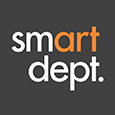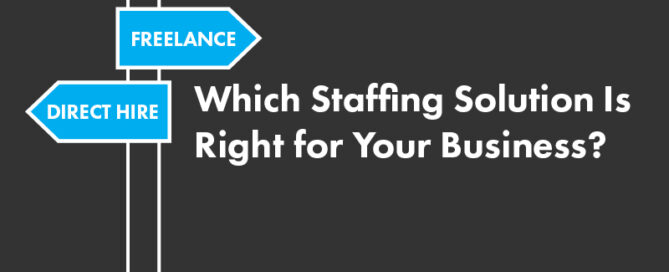You might not know it, but hiring creative, digital, and marketing talent is one of the most critical decisions a business can make. Whether you’re building a marketing team, launching a new product, or creating a standout campaign, the right creative professionals can bring your vision to life. But finding and hiring top-tier creative talent isn’t always easy. From vetting candidates to avoiding common pitfalls, here’s a step-by-step guide to help businesses make smart hiring decisions.
Step 1: Define Your Needs and Goals
Before diving into the hiring process, it’s essential to clearly define what you’re looking for. Creative, digital, and marketing roles can vary widely, so understanding your specific needs will save time and ensure you attract the right candidates.
Key Questions to Ask:
- What’s the scope of the project or role?
- Is this a freelance, contract, or full-time position?
- What skills and experience are essential for success?
- What’s your budget?
Pro Tip: Create a detailed job description that outlines responsibilities, required skills, and desired experience. Be transparent about whether the role is on-site, remote, or hybrid.
Step 2: Source Talent Strategically
Finding creative, digital, and marketing talent isn’t just about posting a job and waiting for applications to roll in. It requires a strategic approach to reach the right candidates.
Where to Look:
- Specialized Staffing Agencies: Partner with a resource like smartdept. to access pre-vetted creative professionals.
- Professional Networks: Use platforms like LinkedIn to connect with candidates who have relevant experience.
- Creative Communities: Explore industry-specific forums, portfolio sites (e.g., Behance, Dribbble), and alumni networks.
Avoid This Pitfall: Posting roles on general gig platforms or social media can result in an overwhelming flood of unqualified applicants, making it harder to identify top talent.
Step 3: Vet Candidates Thoroughly
Once you have a pool of candidates, the vetting process becomes crucial. This step ensures you’re hiring someone with the right skills, work ethic, and cultural fit for your team.
How to Vet Niched Talent:
- Review Portfolios: Look for quality, consistency, and work that aligns with your brand’s style and goals.
- Conduct Behavioral Interviews: Ask situational questions to understand how candidates approach challenges, collaborate, and meet deadlines.
- Check References: Speak with past clients or employers to verify reliability, professionalism, and results.
- Test Their Skills: For certain roles, consider a small paid project or skills assessment to evaluate their abilities in action.
Pro Tip: Avoid relying solely on resumes. A candidate’s portfolio and problem-solving abilities often reveal more about their potential.
Step 4: Focus on Cultural Fit
Creative, digital, and marketing professionals don’t just need to have the right skills—they also need to align with your company’s culture and values. A good cultural fit ensures a smoother collaboration and better long-term results.
What to Look For:
- Alignment with your company’s mission and values.
- Ability to adapt to your team’s communication and workflow style.
- Enthusiasm for your brand or industry.
Avoid This Pitfall: Don’t compromise on cultural fit just because someone has an impressive portfolio. Misaligned values can lead to conflicts down the line.
Step 5: Offer Competitive Compensation and Benefits
Top creative, digital, and marketing talent know their worth, and businesses must be prepared to offer competitive packages to attract and retain them. This doesn’t just mean salary—it also includes benefits and perks.
What to Consider:
- Freelance/Contract Roles: Offer fair hourly or project-based rates, and ensure timely payment.
- Full-Time Roles: Provide healthcare, PTO, 401(k), and other benefits to make your offer stand out.
- Additional Perks: Flexible work arrangements, professional development opportunities, and a positive work environment go a long way.
Pro Tip: Don’t focus solely on cost. Investing in quality talent upfront can save you time and money in the long run by avoiding subpar work or high turnover.
Step 6: Avoid Common Hiring Pitfalls
The hiring process can be tricky, but being aware of common mistakes can help you avoid costly missteps.
Pitfalls to Watch Out For:
- Rushing the Process: Hiring quickly to fill a gap can lead to poor decisions. Take the time to find the right fit.
- Ignoring Red Flags: Pay attention to warning signs like inconsistent communication, incomplete portfolios, or negative references.
- Overlooking Soft Skills: Creativity is important, but so are collaboration, communication, and adaptability.
Pro Tip: Partnering with a staffing agency like smartdept. can help you avoid these pitfalls by pre-vetting candidates and ensuring a seamless hiring process.
Step 7: Build Long-Term Relationships
Hiring creative, digital, and marketing talent isn’t just about filling a role—it’s about building relationships that can grow with your business. Whether you’re working with freelancers or full-time employees, fostering strong connections can lead to better results and future collaborations.
How to Build Relationships:
- Provide clear expectations and constructive feedback.
- Recognize and reward great work.
- Stay in touch with freelancers for future projects.
Pro Tip: A staffing agency like smartdept. can act as a bridge, ensuring both clients and candidates feel supported and valued throughout the partnership.
Why Partner with smartdept.?
At smartdept., we specialize in connecting businesses with top creative and marketing talent. With over 20 years of experience, we’ve built a reputation for delivering pre-vetted professionals who are ready to hit the ground running.
What We Offer:
- Pre-Qualified Talent: Our candidates are carefully screened for skills, experience, and cultural fit.
- Streamlined Process: We handle the heavy lifting, from sourcing to payroll, so you can focus on your business.
- Nationwide Reach: Whether you need on-site, hybrid, or remote talent, we’ve got you covered.
Hiring Creative, Digital, and Marketing Talent Made Easy
Hiring creative, digital, and marketing talent doesn’t have to be overwhelming. By following this guide and partnering with a trusted staffing resource like smartdept., you can attract top-tier professionals who will help your business thrive.
Ready to find the perfect talent for your team? Contact smartdept. today and let us take the stress out of hiring.
#creativehiring #marketingtalent #smartdept #staffingsolutions #hiringtips




















